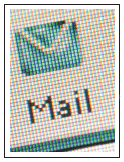Sequential Autoresponders: Timing is Everything

 |
Buying cycles often take days, weeks, months and even years. So how do you keep a prospect's interest and capitalize on the commitment they have shown to your company? If clients and customers need to see advertising and marketing messages multiple times before they feel confident enough to act, then the answer is simple - as often as possible. As such, sequential autoresponders should be considered a worthwhile investment for any serious online enterprise. |
An autoresponder is a computer program that automatically responds to an incoming email. Sounds simple right? Well, it is. Autoresponders are frequently used by sites across the Web for the purpose of responding to general requests. Take for instance that you go on vacation or have a four-hour turnaround responding to customers. Since you want to ensure effective communication to your customers, a good practice is to set up autoresponders to notify of an absence or standard delay.
Autoresponders are a one-shot deal, however. What if you want to communicate with your customers on an ongoing basis? The answer lies with sequential autoresponders, a more elaborate and highly effective method of communication.
Email Marketing on AutoPilot
A sequential autoresponder can be programmed to send a series of pre-defined messages on a specific timeline and allow email marketers to create focused and personalized communications - all while minimizing the management time of promotional efforts. Think of it as a way to maintain essential communication channels with users while engaging in the other important practices of your Web business - like filling orders or developing new products.
Consider that the purpose of your website is to sell a $100 e-book. Your strategy is to create a seven-part article series hinting at what can be found within the e-book upon purchase. Prospects can request the article series through an email-based form from the website. With an ordinary autoresponder, you would have to send the multi-part email series, one part at a time, to each of the recipients. In addition, the emails will need to be sent in the order that they signed up, so that your prospects get the series in the proper sequence. While this is certainly possible, providing the requested content in the proper order with just one action makes more sense.
Utilized most often to build relationships over a defined period of time without all of the grunt work, sequential autoresponders can be grouped into two categories - sequenced and scheduled.
A sequenced autoresponder might work well with a website offering an educational course. The recipient is offered information over a week, month or a even fiscal quarter, based on the date they opted in. For example, if the recipient opted in on a Monday, the sequential autoresponder can be programmed to send the next communication in two days (Wednesday), the next in two more days (Friday), and again in three days (Monday). If the recipient signed up on a Tuesday, the next message could be sent on Thursday, then the following Tuesday. The messages are scheduled for a defined cycle.
If a communication needs to be on specific dates, then a scheduled autoresponder is the best choice. Say, for instance that a popular music group is coming to town. The band's website, which you visit regularly and have have requested to be notified of their local appearances, has wisely set up a sequential autoresponder. An email is sent 30 days in advance, notifying you where to buy tickets. Three days before the event, another email is sent advising where is the best place to park. Two days after the show, a follow-up email asks for feedback. In this example, the emails are scheduled on specific dates, regardless of when the recipient opts in.
Thinking Sequential
Now that you are completely sold on the concept of sequential autoresponders as part of your marketing campaign, it's time to determine what characteristics are important for your enterprise.
You've heard it before and you will hear it again - content is king. One of the more significant barriers to implementing an effective campaign is writing copy. Investing in the time necessary to write a series of compelling and informative emails lets the autoresponder software do the vast majority of the promotional grunt work. But without effective copy, your messages could be a waste of everyone's time.
According to Brendan Wovchko of Interspire, makers of the SendStudio autoresponder, "Too many autoresponders sound like a sales pitch. A good autoresponder doesn't try to sell something. It is a tool to improve the life of the recipient. If you keep that focus, your campaigns will be successful and you'll ultimately sell more." Wovchko also suggests not being overly rigid in the language used in autoresponders. "Keep them casual and make them sound personal.
Besides the simple convenience of sequential autoresponders, the next great benefit is establishing trust and positive relationships with your prospective customers over time. Keeping your messages casual and personal, as Wovchko suggests, will go a long way in building brand loyalty.
When it comes to deciding what to communicate to your customers, the possibilities are limitless. Product or service tutorials, best practice case studies, customer satisfaction and usability surveys all fit within the scope of effective business communication and are becoming not just an increasingly standard practice but an important component of running a successful Internet business.
Understanding The Limitations
All marketing techniques have limitations, including the software used to deploy them. When investigating sequential autoresponder services, there are several considerations. Researching how providers comply with the CAN-SPAM Act, as well as the issues surrounding deliverability should be of the highest importance. Each provider should clearly lay out their protocols and procedures on how ISP relationships are managed and maintained. This can mean the difference between reaching your target audience and messages being lost.
While questions about deliverability are of great importance, they are not the only ones you should be asking. Question the use of caps (the limit on the number of autoresponder messages you can send per month), inclusion of third-party lists the availability and degree of support provided and the management of subscriptions. These are all significant issues which must be addressed. Failure to act so can result in losing the subscribers you have worked so feverishly to attain.
If you are looking to market your website or its products and services with the least amount of effort and the highest returns, then the ability to automate marketing and disseminate information regularly through autoresponders should be a high priority for online marketers. If a boring old standard autoresponder does not fit the bill, then it is time to look beyond and think about sequential marketing. -
Sequential Autoresponders - Products & Services to Consider:
www.aweber.com: AWeber's browser-based subscriptioncentered and automated responder application can be maintained from virtually anywhere. In business since 1998, AWeber offers unlimited broadcasts, responders, and free training videos.
www.interspire.com/sendstudio/: Sendstudio gives marketers the ability to create and manage their own subscriber lists, send text and HTML newsletters and schedule autoresponders. Sendstudio also gives Web developers the ability to re-brand and on-sell to clients.
www.infinite.ibasics.biz: Infinite Responder is a Sequential Autoresponder developed with PHP that allows you to time your messages. It has an opt-in feature and allows for unlimited autoresponders. A nice piece of software and an active forum for support.

Subscribe to Our Newsletter!
Latest in Marketing








